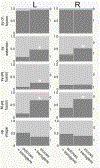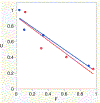Transgene-mediated skeletal phenotypic variation in zebrafish
- PMID: 32112658
- PMCID: PMC7483860
- DOI: 10.1111/jfb.14300
Transgene-mediated skeletal phenotypic variation in zebrafish
Abstract
When considering relationships between genotype and phenotype we frequently ignore the fact that the genome of a typical animal, notably including that of a fish and a human, harbours a huge amount of foreign DNA. Such DNA, in the form of transposable elements, can affect genome function in a major way, and transgene biology needs to be included in our understanding of the genome. Here we examine an unexpected phenotypic effect of the chromosomally integrated transgene fli1a-F-hsp70l:Gal4VP16 that serves as a model for transgene function generally. We examine larval fras1 mutant zebrafish (Danio rerio). Gal4VP16 is a potent transcriptional activator that is already well known for toxicity and mediating unusual transcriptional effects. In the presence of the transgene, phenotypes in the neural crest-derived craniofacial skeleton, notably fusions and shape changes associated with loss of function fras1 mutations, are made more severe, as we quantify by scoring phenotypic penetrance, the fraction of mutants expressing the trait. A very interesting feature is that the enhancements are highly specific for fras1 mutant phenotypes, occurring in the apparent absence of more widespread changes. Except for the features due to the fras1 mutation, the transgene-bearing larvae appear generally healthy and to be developing normally. The transgene behaves as a genetic partial dominant: a single copy is sufficient for the enhancements, yet, for some traits, two copies may exert a stronger effect. We made new strains bearing independent insertions of the fli1a-F-hsp70l:Gal4VP16 transgene in new locations in the genome, and observed increased severities of the same phenotypes as observed for the original insertion. This finding suggests that sequences within the transgene, for example Gal4VP16, are responsible for the enhancements, rather than the effect on neighbouring host sequences (such as an insertional mutation). The specificity and biological action underlying the traits are subjects of considerable interest for further investigation, as we discuss. Our findings show that work with transgenes needs to be undertaken with caution and attention to detail.
Keywords: Fraser syndrome; Gal4VP16; canalization; craniofacial skeleton; fras1; opercle; skeletal fusion.
© 2020 The Fisheries Society of the British Isles.
Figures








References
-
- Asakawa K, Suster ML, Mizusawa K, Nagayoshi S, Kotani T, Urasaki A, Kishimoto Y, Hibi M, & Kawakami K (2008). Genetic dissection of neural circuits by Tol2 transposon-mediated Gal4 gene and enhancer trapping in zebrafish. Proceedings of the National Academy of Sciences of the United States of America, 105, 1255–1260 - PMC - PubMed
-
- Belancio VP, Hedges DJ, & Deininger P (2008). The Tol2-mediated Gal4-UAS method for gene and enhancer trapping in zebrafish. Genome Research, 18, 343–358 - PubMed
MeSH terms
Grants and funding
- NICHD P01-HD022486/NH/NIH HHS/United States
- NICHD P01-HD022486./NH/NIH HHS/United States
- R01 OD011116/OD/NIH HHS/United States
- P01 HD022486/HD/NICHD NIH HHS/United States
- T32 HD007348/HD/NICHD NIH HHS/United States
- R01 DE013834/DE/NIDCR NIH HHS/United States
- R25 HD070817/HD/NICHD NIH HHS/United States
- P01-HD022486/HD/NICHD NIH HHS/United States
- R00-DE024190/DE/NIDCR NIH HHS/United States
- NIDCR R01-DE13834/NH/NIH HHS/United States
- R00-DE024190/NH/NIH HHS/United States
- R01-DE13834/DE/NIDCR NIH HHS/United States
- R00 DE024190/DE/NIDCR NIH HHS/United States
LinkOut - more resources
Full Text Sources
Molecular Biology Databases
